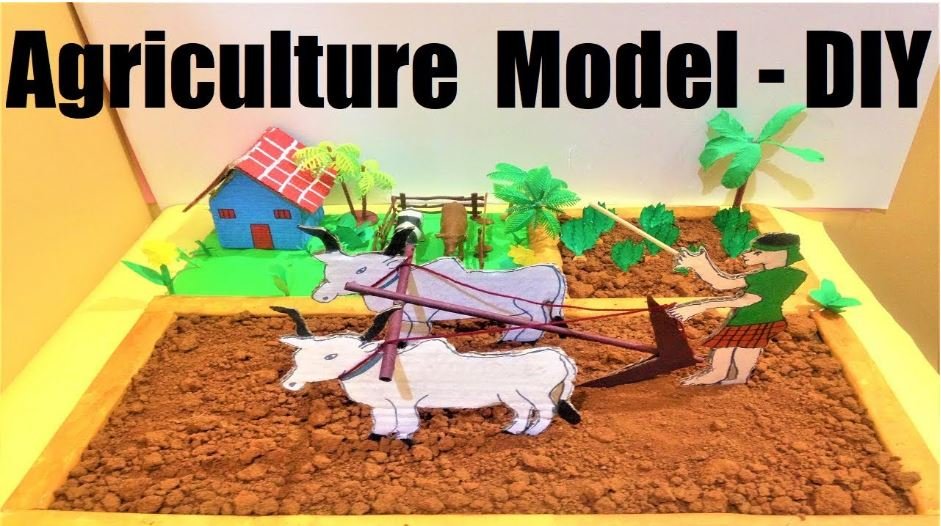1. Introduction

Agriculture is the backbone of human civilization and the primary source of food. Crop production and management involve the scientific methods used to grow crops efficiently to meet the growing demand for food, fiber, and raw materials.
With the world’s population increasing, efficient crop management is vital for food security. Modern farming involves scientific practices such as soil preparation, irrigation, fertilizers, pest control, and mechanization.
2. Importance of Crop Production
- Provides food and nutrition.
- Supplies raw materials for industries (cotton, jute, sugarcane).
- Employment source for rural populations.
- Contributes to GDP and exports.
- Supports allied industries like dairy, poultry, and fisheries.
3. Agricultural Practices – Step by Step
The main practices involved in crop production are:
- Preparation of soil.
- Sowing of seeds.
- Addition of manures and fertilizers.
- Irrigation.
- Protection from weeds and pests.
- Harvesting.
- Storage of produce.
4. Types of Crops (Seasons in India)
- Kharif Crops (Monsoon crops, sown in June–July, harvested in Sept–Oct).
- Examples: Rice, Maize, Cotton, Groundnut.
- Rabi Crops (Winter crops, sown in Oct–Nov, harvested in March–April).
- Examples: Wheat, Barley, Mustard, Pea.
- Zaid Crops (Summer crops, sown between Rabi and Kharif seasons).
- Examples: Cucumber, Watermelon, Muskmelon.
5. Preparation of Soil
Soil preparation is the first step in crop production. It improves soil aeration and makes nutrients available for plants.
- Ploughing: Turning and loosening soil with a plough.
- Levelling: Breaking large soil lumps and levelling the field.
- Manuring: Adding organic matter to enrich soil fertility.
6. Sowing of Seeds
Seeds must be:
- Healthy, clean, and disease-free.
- Sown at proper depth and distance.
- Selected according to soil and climate.
Methods of sowing:
- Traditional seed drills.
- Broadcasting (scattering by hand).
- Modern mechanical drills for uniform distribution.
7. Manures and Fertilizers
- Manures (organic): Natural, eco-friendly, improve soil structure. (Ex: compost, cow dung, green manure).
- Fertilizers (inorganic): Chemical substances rich in nutrients like N, P, K. (Ex: Urea, Superphosphate, Potash).
⚠️ Excessive use of fertilizers leads to soil degradation and water pollution. Integrated nutrient management is recommended.
8. Irrigation and Its Methods
Irrigation is supplying water to crops at proper intervals.
Traditional Methods: Moat, Dhekli, Chain pump, Rahat.
Modern Methods:
- Sprinkler System: Sprays water like rainfall, useful in sandy soil.
- Drip Irrigation: Delivers water drop by drop near roots, saves water.
- Canal Irrigation, Tube wells: Widely used in India.
9. Protection from Weeds and Pests
- Weeds: Unwanted plants competing with crops for nutrients. Controlled by:
- Manual weeding (hand-pulling, hoeing).
- Chemical weedicides (2,4-D).
- Pests & Diseases: Controlled by:
- Pesticides, fungicides, insecticides.
- Biological control (using natural predators).
- Resistant crop varieties.
10. Harvesting and Storage of Crops
- Harvesting: Cutting and collecting mature crops, done manually with sickles or mechanically using harvesters.
- Threshing: Separating grains from stalks.
- Storage: Grains must be dried properly and stored in silos, godowns, or metal bins to prevent insect, fungus, or rodent damage.
11. Animal Husbandry in Crop Production
Animal husbandry supports agriculture by providing:
- Manure for fields.
- Draught power (bullocks for ploughing).
- Dairy, poultry, fisheries, and bee-keeping as additional income.
12. Traditional vs. Modern Farming Practices
| Traditional Farming | Modern Farming |
|---|---|
| Low yield | High yield (HYV seeds) |
| Manual tools | Tractors, harvesters, drones |
| Organic manure | Chemical fertilizers |
| Rain-dependent irrigation | Modern irrigation methods |
| Local seed varieties | HYV & GM seeds |
13. Role of Science and Technology in Crop Management
- Development of high-yielding seeds.
- Biotechnology (GM crops, tissue culture).
- Mechanization with modern tools.
- Use of drones for spraying and monitoring.
- Weather forecasting and satellite-based farming.
14. Problems Faced in Crop Production
- Dependence on monsoons.
- Small fragmented land holdings.
- Pests, weeds, and diseases.
- Soil erosion and fertility loss.
- Climate change and drought.
- High input cost for modern farming.
15. Sustainable Agricultural Practices
- Organic farming.
- Crop rotation and mixed cropping.
- Use of bio-fertilizers and bio-pesticides.
- Rainwater harvesting.
- Minimum tillage to conserve soil moisture.
16. Government Schemes and Farmer Welfare
- PM-KISAN: Direct income support to farmers.
- PM Fasal Bima Yojana: Crop insurance.
- PM Krishi Sinchai Yojana: Irrigation facilities.
- National Mission for Sustainable Agriculture.
- Minimum Support Price (MSP): Protects farmers’ income.
17. Conclusion
Crop production and management form the foundation of food security and economic stability. This project helped me understand how science plays a crucial role in agriculture through soil preparation, irrigation, pest control, and technology.
The future of agriculture lies in sustainable and eco-friendly practices that balance productivity with environmental conservation. Farmers, scientists, and government must work together to ensure better yield, reduced costs, and healthier food for all.
18. Bibliography
- NCERT Science Textbook – Class 9 (Chapter: Crop Production and Management)
- NCERT Biology Textbooks – Class 11, 12
- “Fundamentals of Agriculture” by Arun Katyayan
- Indian Council of Agricultural Research (ICAR) resources
- Websites: FAO.org, Krishi Jagran

